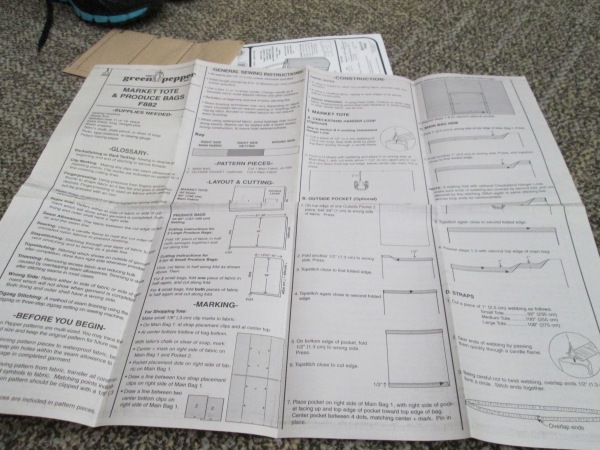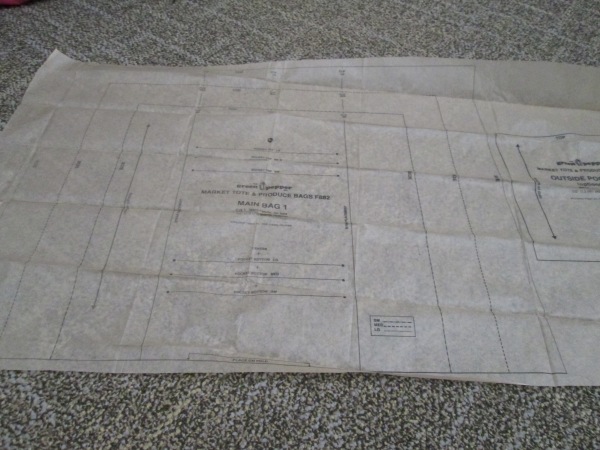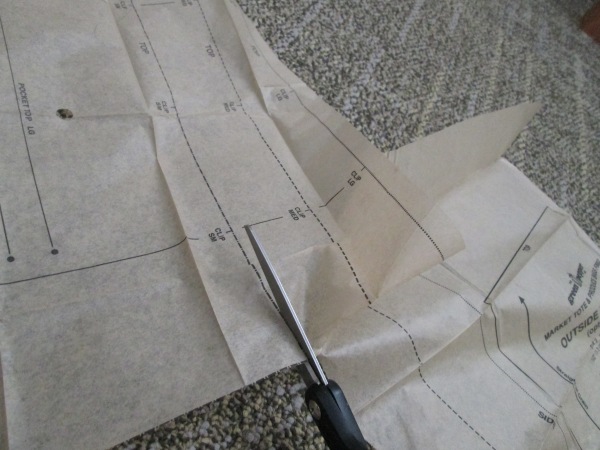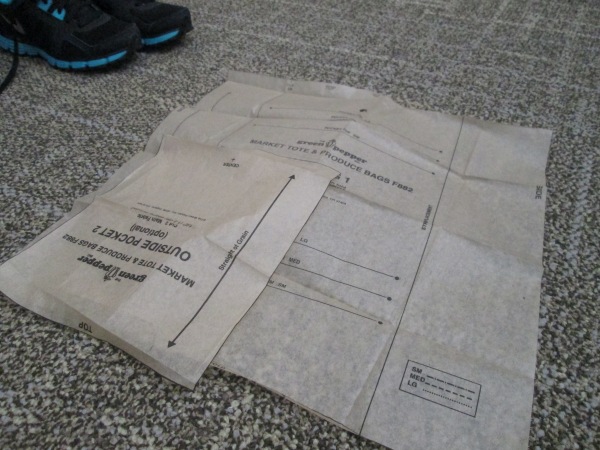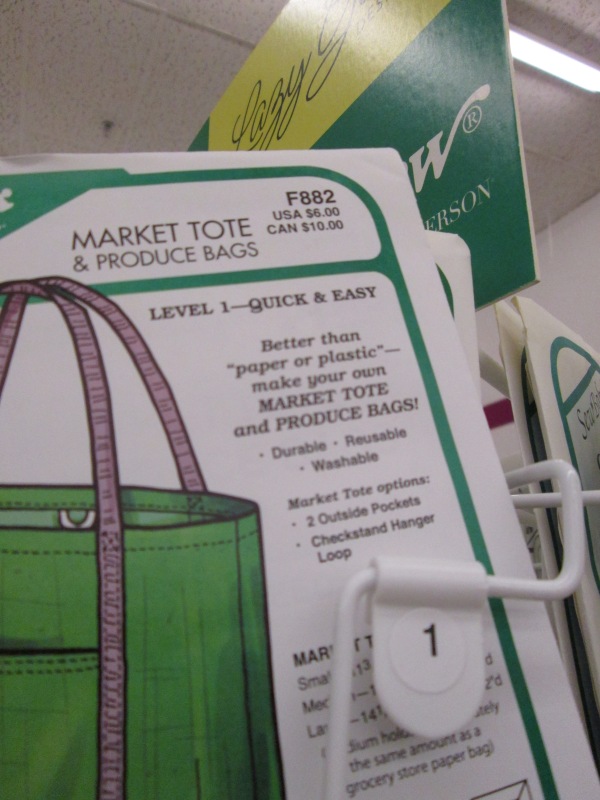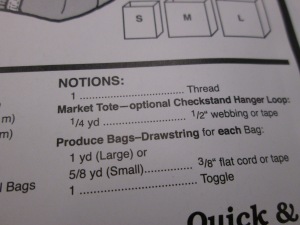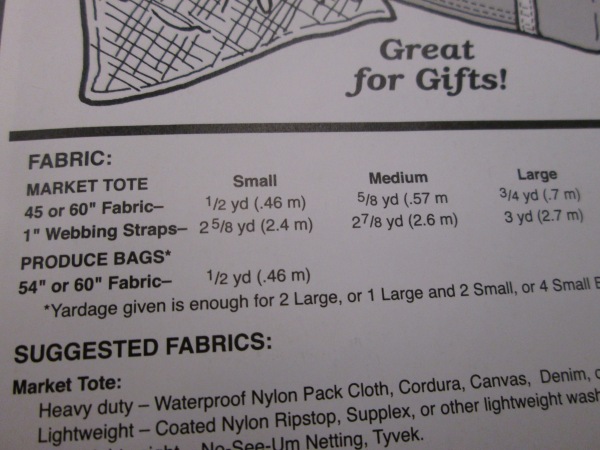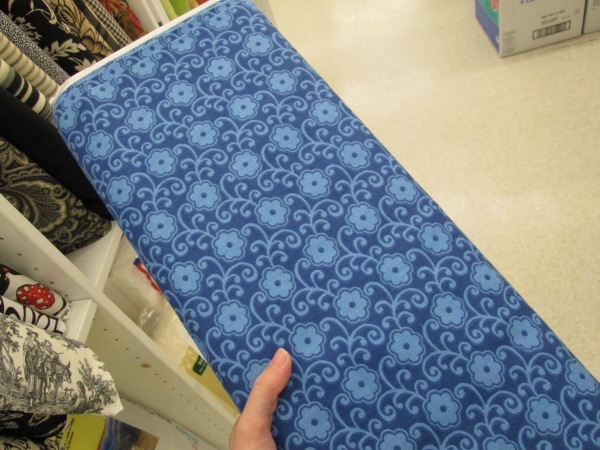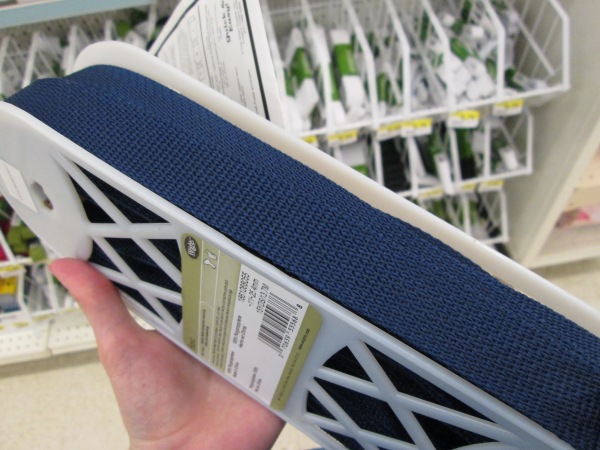And now the epic conclusion to the Sew Me Your Stuff saga of how to go from pattern to product – Market Tote Edition. This post detailed the process of choosing an easy pattern for a beginner and finding notions in the store. This post will guide you through understanding the pattern and setting it up to get started. Now it’s time to learn how to turn that pattern into a finished craft!
The last step mentioned in the previous post was cutting out the pattern pieces needed for your project. The next step will be to trace the pieces onto fabric, but there’s a little preparation before you do that.
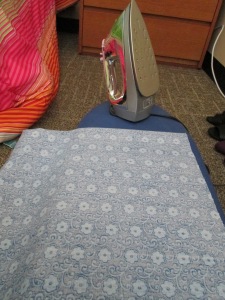
First, you’ll need to iron the fabric to smooth out any wrinkles. Wrinkles can distort the traced pattern and cause your final product to be pretty wonky. This fabric that I’m using I picked from the home decor section of the fabric store, and it’s a simple woven cotton. I highly recommend a fabric like this for a beginner’s craft. It was great to work with!
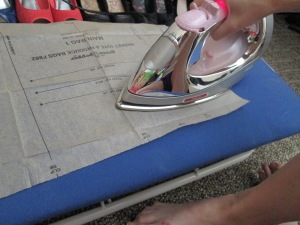
Next you have to flip your iron to a low setting and press your pattern pieces flat. The folds and creases in the paper can also distort your lines, so it’s very important that you completely flatten the pattern piece.
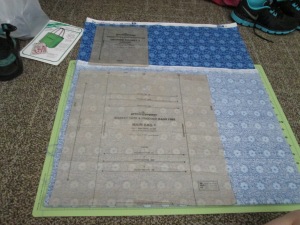
Before you begin tracing, lay the pattern pieces on the fabric to be sure that you’re leaving yourself enough fabric for both pieces. The pattern instructions will often contain a guide to laying the pieces that you can use to help you with this step.
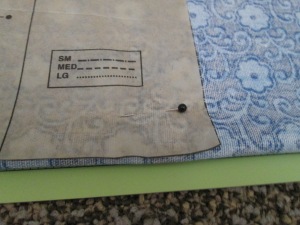
To help you trace the pattern accurately, you should pin the pattern to the fabric. If your fabric is folded, pin the pattern through all layers. This thin paper can easily be shifted while tracing, but pins will hold it in place.

Next it’s time to actually trace the pattern. Because all of the edges are straight, I used a ruler to guide me. This isn’t always possible, but if you can then it will help you keep your lines accurate.
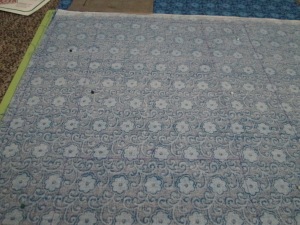
You can see in this picture that I completely traced the outline of the pattern, but very importantly I also traced the markings on the pattern that indicate where the pocket and straps should go. Make sure you transfer all markings from the pattern to the fabric!
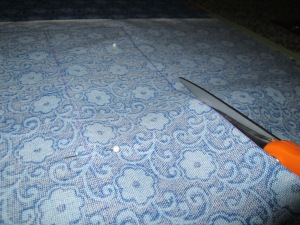
Next it’s time to cut! With all the extra markings on the fabric, be sure you only cut the lines that you’re supposed to.
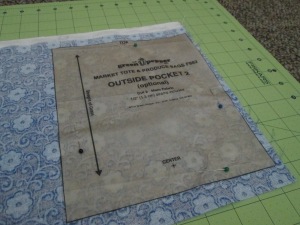
Repeat this process for all pattern pieces. It may be most time-effective to trace all pieces and then cut all pieces, but because of the layout of these pieces I decided to do them separately.
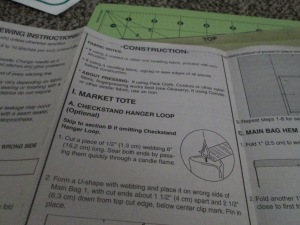
From here on out I’ll be following the instructions included in the sewing pattern. It’s very important that you start with the first step and follow the instructions carefully. (I actually skipped the checkstand hanger loop)
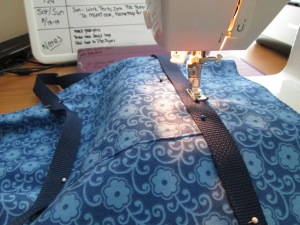
Midway through the process. Webbing straps are pretty easy to sew! Notice that all pins are perpendicular to the path of the sewing machine. Most sewing machines can tolerate horizontal pins like this, but if your pins are vertical it can damage your sewing machine!
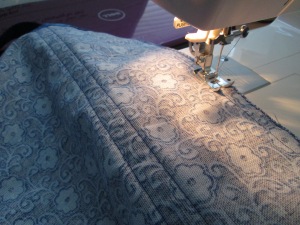
Sewing the side seams. I had some crookedness in my stitches, but this fabric was very easy to move through the machine.
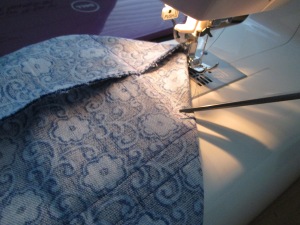
Cutting the last stitch!
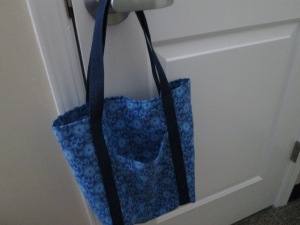
And voila! We have a bag!
Hopefully this series has helped you see how easy it is to go from cutting the pattern to putting your new tote bag (or other craft) to work. You can really surprise yourself with what you’re capable of making once you get the hang of sewing!
Learni.st – Learn how to sew starting from step one
Pinterest & Twitter – Follow for tips, ideas, and more
Etsy – Shop Sew Me Your Stuff





















